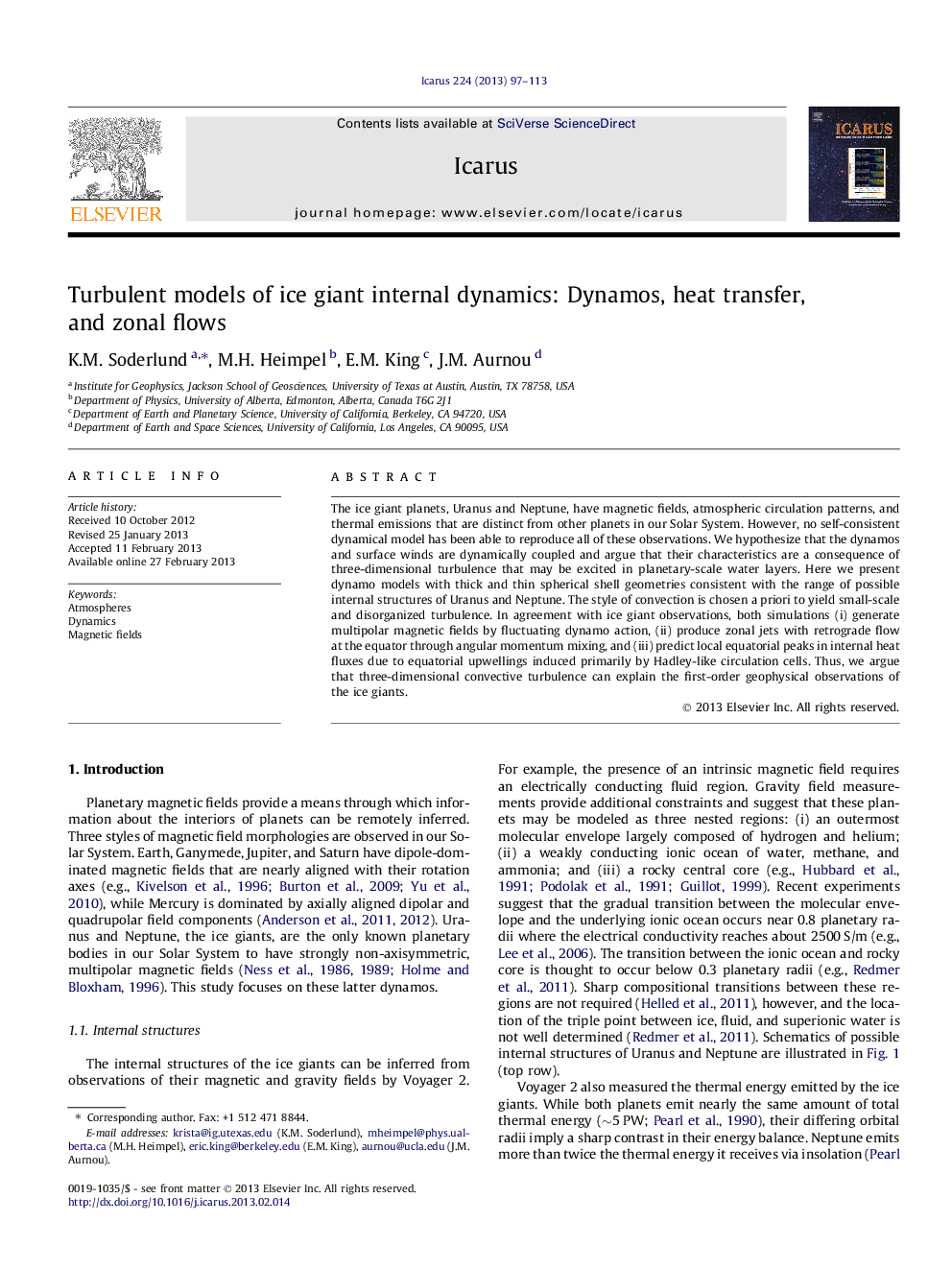| Article ID | Journal | Published Year | Pages | File Type |
|---|---|---|---|---|
| 1773533 | Icarus | 2013 | 17 Pages |
The ice giant planets, Uranus and Neptune, have magnetic fields, atmospheric circulation patterns, and thermal emissions that are distinct from other planets in our Solar System. However, no self-consistent dynamical model has been able to reproduce all of these observations. We hypothesize that the dynamos and surface winds are dynamically coupled and argue that their characteristics are a consequence of three-dimensional turbulence that may be excited in planetary-scale water layers. Here we present dynamo models with thick and thin spherical shell geometries consistent with the range of possible internal structures of Uranus and Neptune. The style of convection is chosen a priori to yield small-scale and disorganized turbulence. In agreement with ice giant observations, both simulations (i) generate multipolar magnetic fields by fluctuating dynamo action, (ii) produce zonal jets with retrograde flow at the equator through angular momentum mixing, and (iii) predict local equatorial peaks in internal heat fluxes due to equatorial upwellings induced primarily by Hadley-like circulation cells. Thus, we argue that three-dimensional convective turbulence can explain the first-order geophysical observations of the ice giants.
► We simulate planetary dynamos driven by turbulent, poorly organized convection. ► Our models generate multipolar magnetic fields by fluctuating dynamo action. ► We predict local equatorial peaks in internal heat fluxes of both Uranus and Neptune. ► Three-jet zonal flows result from absolute angular momentum mixing in our models. ► Weakly constrained turbulence may be important for generating ice giant-style dynamics.
